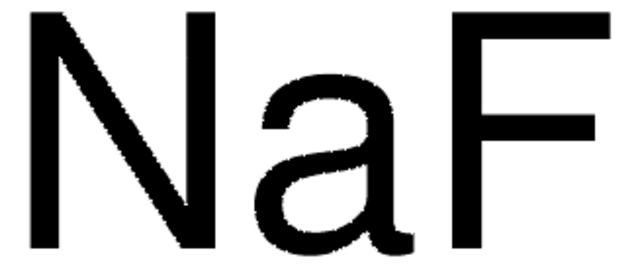S7653
Sodium chloride
BioXtra, ≥99.5% (AT)
Synonym(s):
Natrium Chloride, Sodium monochloride, Halite, NaCl
About This Item
Recommended Products
product line
BioXtra
Quality Level
Assay
≥99.5% (AT)
form
powder
technique(s)
immunoblotting: suitable
immunoprecipitation (IP): suitable
impurities
filtertest, complies
insoluble matter, complies
pH
5.0-8.0 (20 °C, 1 M in H2O)
mp
801 °C (lit.)
solubility
H2O: 1 M, clear, colorless
density
2.16 g/cm3 at 25 °C (77 °F)
anion traces
bromide (Br-): ≤0.01%
iodide (I-): ≤0.001%
phosphate (PO43-): ≤0.0005%
sulfate (SO42-): ≤0.05%
cation traces
Al: ≤0.0005%
As: ≤0.0001%
Ba: ≤0.0005%
Bi: ≤0.0005%
Ca: ≤0.002%
Cd: ≤0.0005%
Co: ≤0.0005%
Cr: ≤0.0005%
Cu: ≤0.0005%
Fe: ≤0.0001%
K: ≤0.005%
Li: ≤0.0005%
Mg: ≤0.0005%
Mn: ≤0.0005%
Mo: ≤0.0005%
Ni: ≤0.0005%
Pb: ≤0.0005%
Sr: ≤0.0005%
Zn: ≤0.0005%
absorption
≤0.01 at 260
≤0.01 at 280 in H2O at 1 M
λ
(260 nm Amax: ≤ 0.01)
application(s)
genome editing
microbiology
SMILES string
[Na+].[Cl-]
InChI
1S/ClH.Na/h1H;/q;+1/p-1
InChI key
FAPWRFPIFSIZLT-UHFFFAOYSA-M
Looking for similar products? Visit Product Comparison Guide
Related Categories
General description
Application
- Prepare PBS (Phosphate-buffered saline) solution.
- in pre-treatment of tracheal cartilage tissue samples before decellularization.
- As a component of trypticase soy agar medium to culture bacteria.
- Prepare lysis buffer.
Features and Benefits
Other Notes
also commonly purchased with this product
comparable product
Storage Class Code
13 - Non Combustible Solids
WGK
WGK 1
Flash Point(F)
Not applicable
Flash Point(C)
Not applicable
Personal Protective Equipment
Choose from one of the most recent versions:
Already Own This Product?
Find documentation for the products that you have recently purchased in the Document Library.
Customers Also Viewed
Articles
Highlighting existing and novel fabrication methods for both, solid and hydrogel-based scaffold for tissue engineering applications.
Protocols
nalysis of the omega 3 fatty acid profiles from fish oil capsules and salmon, highlighted through the use of 2 GC columns of different selectivity for analysts who wish to perform confirmatory analysis.
Our team of scientists has experience in all areas of research including Life Science, Material Science, Chemical Synthesis, Chromatography, Analytical and many others.
Contact Technical Service




